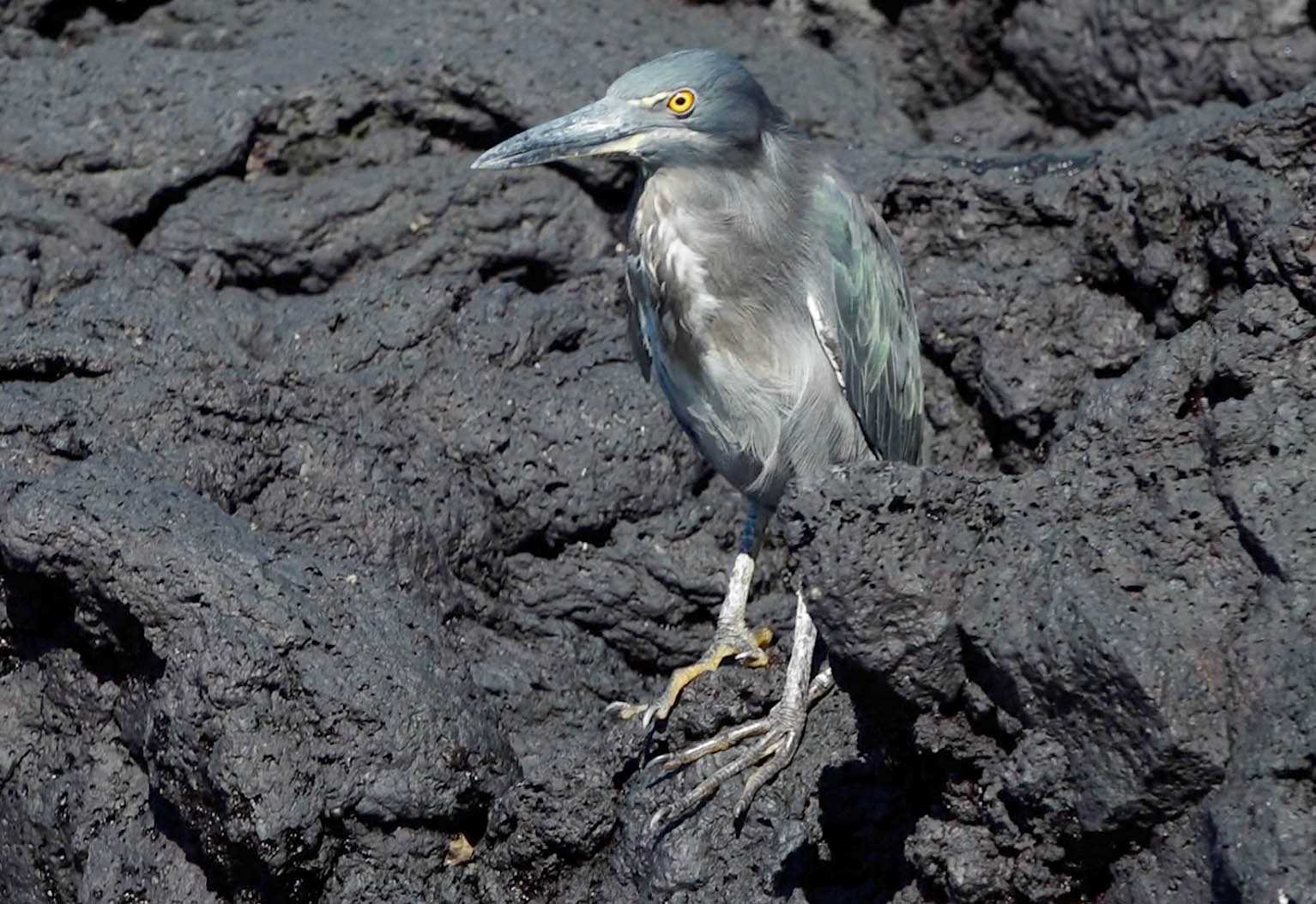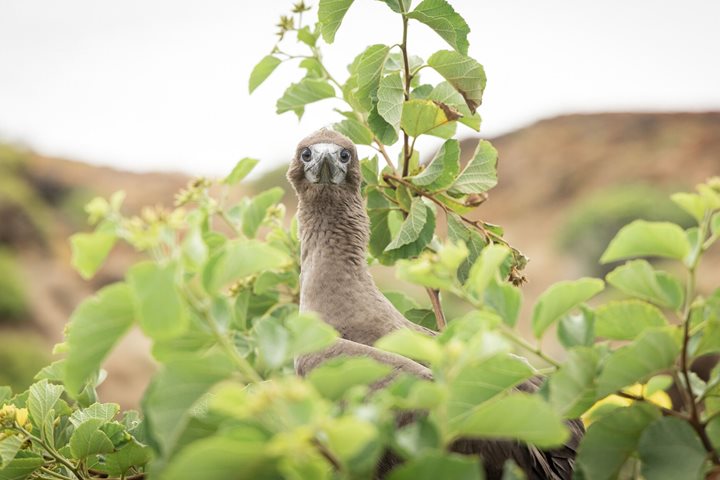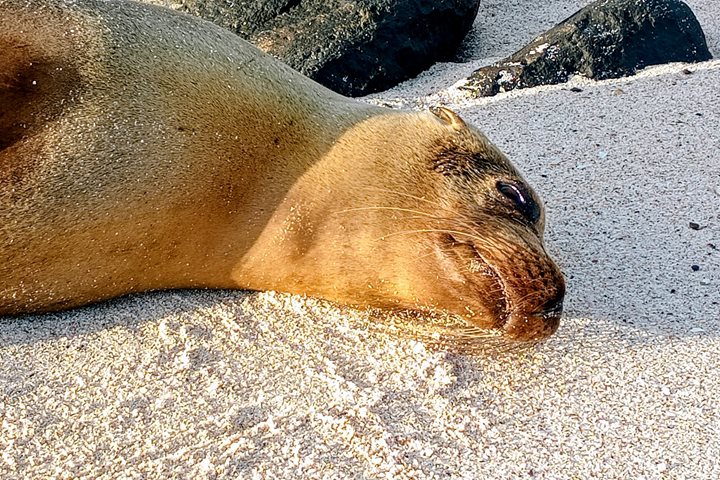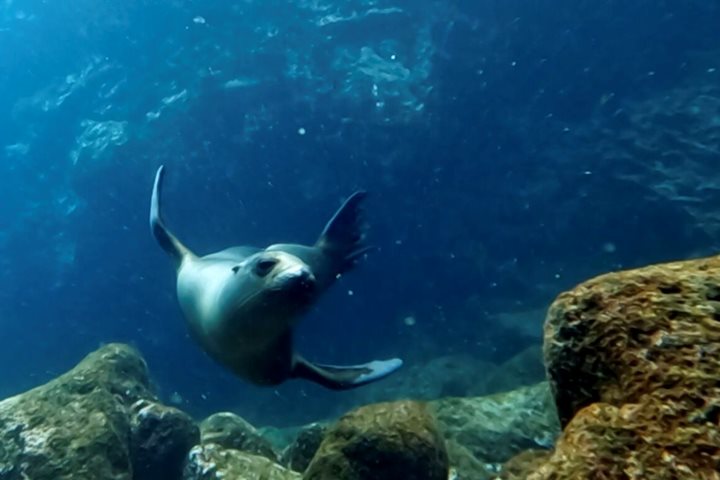We left Santa Fe Island behind and after a long navigation, where early in the morning we arrived at Sombrero Chino, or “Chinese Hat,” a small island that lies just off the southern tip of Santiago. At distance, it looks barren and sterile, but it offers a spectacular view of the geology and the arrival of pioneer plants to the archipelago.
After breakfast we headed to the shore of the Sombrero Chino by Zodiac, observing some brown noddy terns nesting on small crevices on the vertical cliffs of the island. The water is so clear here that one is able to observe schools of mullets, salemas, and king angelfish close to the surface. All the landscape change dramatically when we approached to the coast of Santiago Island; the black lava fields contrasted with the brownish hills and the greenery of the highlands being possible to understand the formation of volcanic archipelagos. Along the seashore some lava herons and brown pelicans tried to catch some fish while in the ocean. Galapagos penguins and sea lions were the highlight, and our guests had great opportunities to photograph these incredible endemic creatures.
In the afternoon, National Geographic Islander repositioned at the southern portion of James Island. From afar, the island looks quite colorful, with an impressive if somewhat barren landscape which contrasts with the greenery of the highlands. And it was possible to observe huge black lava flows along the Island, the eruption of which took place in 1897, destroying all existing signs of life there.
At 3:30 p.m., with excellent weather conditions, we set foot on Sullivan Bay. We walked pahoehoe or ropy lava formations, observing a great number of eroded tuff cones, mute witnesses of explosive eruptions which occurred only a few years ago. We observed lava lizards, various pioneer plants, and large painted locusts along a trail which lead to the old lava flows and formations with spatter cones forming a sort of surrealist, Mars-like terrain. It was late in the afternoon when we came back onboard, observing the coloring of the mountains from a setting sun, while in our minds thought back to those incredible encounters witnessed today.







